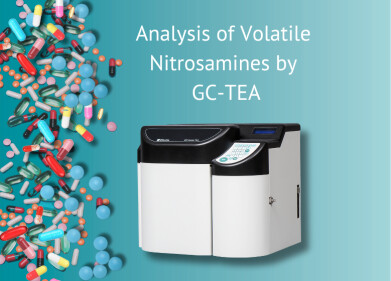GC-MS
Sniffing Out Cancer Cells — Chromatography Investigates
Jul 20 2016
As we apply sunscreen and look for shelter during the hottest part of the day — spare a thought for the scientists working hard to find a reliable way of detecting skin cancer. New research suggests that the answer could be staring back at us as we look in the mirror — noses.
Well, not actually our noses — although it is known that dogs can sniff out cancers and other diseases — but an electronic nose. The nose — when used with gas chromatography in tandem with mass spectrometry (GC-MS) — can tell the difference between skin cancer cells and normal cells simply by sniffing them. The use of GC-MS to analyse volatile molecules is discussed in the article, The Benefits of GC/MS Coupled with a Headspace Trap to Monitor Volatile Organic Compounds in the Production of Beer.
It’s a dog’s life
While basal cell carcinoma is the most common form of skin cancer, melanoma is the most deadly. It occurs when skin cells begin to develop abnormally, with the most common symptom the appearance of a new mole or the change in appearance of an existing mole. It is thought that one of the causes of melanoma is UV light — particularly the strong UV light we get from the sun in summer.
Melanoma affects certain types of skin cells that produce the pigment that gives us our skin colour — the melanocytes. With around 75% of skin cancer deaths attributed to melanoma — an early detection is key to improving survival. A visual check is the current method for detecting melanomas, which relies on people to examining themselves.
Based on the fact that dogs can detect cancer cells, researchers have used the idea that perhaps the abnormal cancer cells give off volatile compounds (known as volatile organic compounds or VOCs) that are in some way different from the VOCs given off by normal cells.
DNA nanotubes captures VOCs
A research team based at the Monell Chemical Senses Center used GC-MS to analyse the odours detected from normal and cancerous melanocytes — but they used a novel sampling system to detect the VOCs. The sensors had DNA strands as the chemical recognition site attached to carbon nanotubes. These devices can detect much lower concentrations of VOCs meaning they are very sensitive.
The DNA strands can be designed recognise specific odours by altering the base sequence of the DNA strands, so they can be tuned to recognise the odours that make up a specific medical condition. The sensors have been shown to be self-regenerating meaning they do not require refreshing between sample runs. Consequently, the DNA nanotubes are seen as ideal for electronic noses.
The team at Monell used these nanotubes and GC-MS to not only show that there were differences between normal and cancerous cells — but what those differences were. The sensors could even detect differences between different types of melanomas. The team suggest that the results show that monitoring VOCs could be a useful screening method for detecting melanomas.
Digital Edition
Chromatography Today - Buyers' Guide 2022
October 2023
In This Edition Modern & Practical Applications - Accelerating ADC Development with Mass Spectrometry - Implementing High-Resolution Ion Mobility into Peptide Mapping Workflows Chromatogr...
View all digital editions
Events
Jan 20 2025 Amsterdam, Netherlands
Feb 03 2025 Dubai, UAE
Feb 05 2025 Guangzhou, China
Mar 01 2025 Boston, MA, USA
Mar 04 2025 Berlin, Germany














